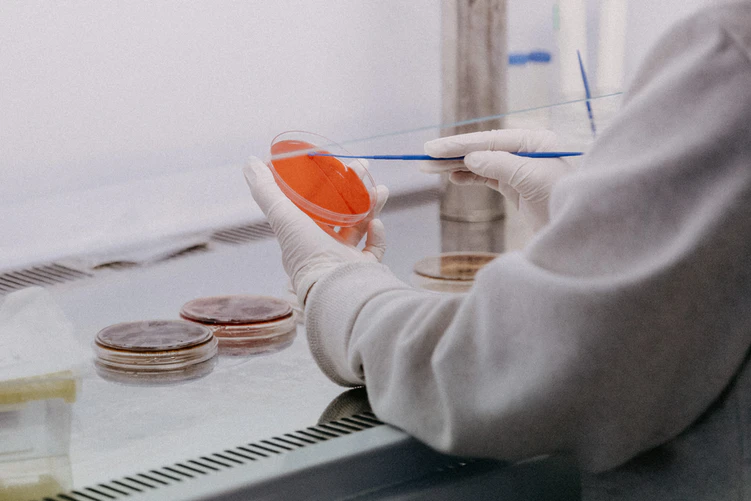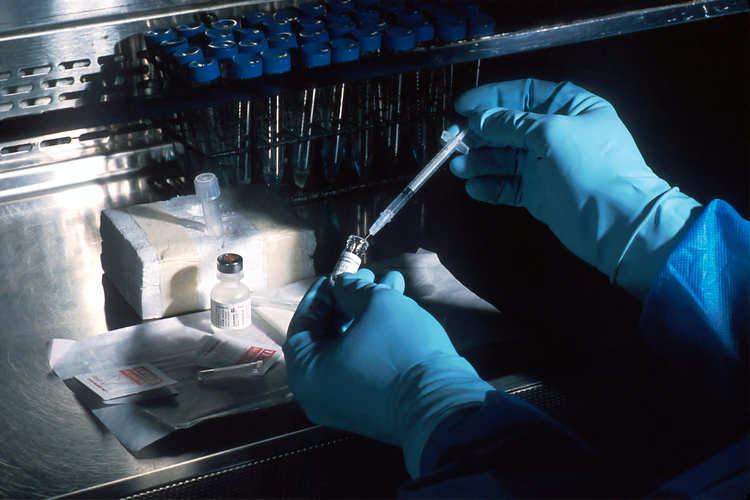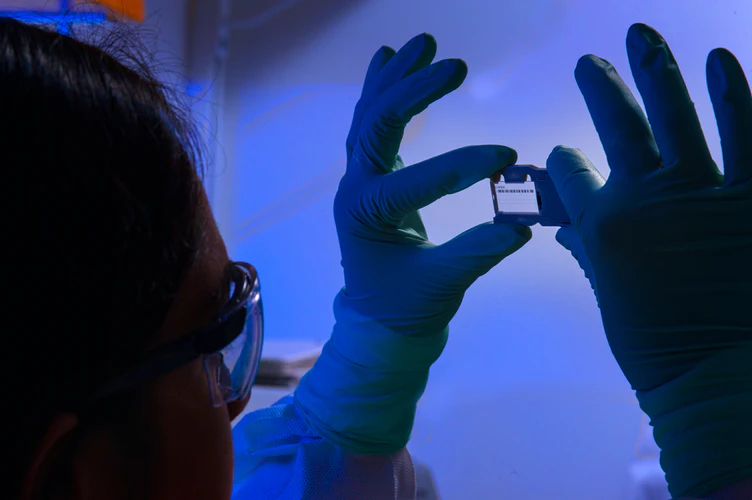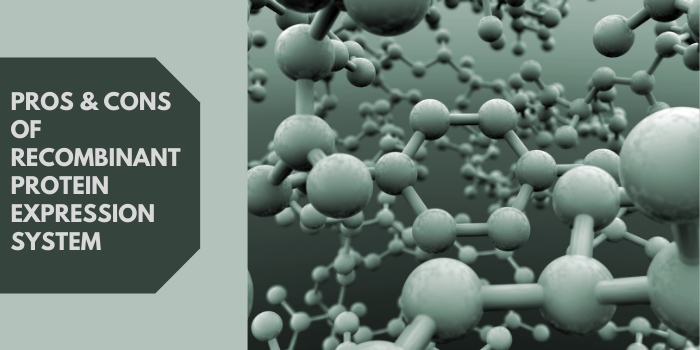Pros & Cons Of Recombinant Protein Expression System
Jun 8th 2021
Pros & Cons Of Recombinant Protein Expression System
Protein expression systems are often related to how researchers regulate, synthesize, and modify proteins in living organisms. When it comes to protein modification research, the term may either apply to the study object or various lab techniques used to manufacture and develop proteins. In practical terms, the expression system of recombinant protein relies on utilizing cellular machinery.
Talking about proteins, researchers tend to regulate and synthesize them based on a cell’s functional requirements. Moreover, DNA involved in the experiment stores a protein’s blueprints and gets decoded by regulated transcriptional methods to produce mRNA or messenger RNA. This message stored by an mRNA later translates into a specific protein. Here, transcription is the transfer process that occurs from DNA to messenger RNA. This translates into protein-based synthesis, which translates into sequences by mRNA.
Introduction
In prokaryotes, the translation and transcription process takes place simultaneously. However, mRNA translation begins before the full synthesis of a mature mRNA. One can refer to coupled translation and transcription to know the procedure of standard translation and transcription. In eukaryotes, such processes spatially separate and occur sequentially, with transcription occurring in translation and nucleus or protein synthesis in the cytoplasm.

Cloning and genetic engineering development have opened several possibilities of isolation and expression of heterologous proteins for scientific purposes. Moreover, many advances in technology have enabled the isolation and expression of recombinant proteins on a molecular and large level. But, when it comes to large-scale applications like antibody production, enzyme, or vaccine production, the proteins needed are pretty high. Under such situations, the procedure or system through which a protein gains its expression should be straightforward to maintain and culture, produce large protein amounts and proliferate.
Besides, mammalian proteins tend to undergo multiple post-translational modifications. The protein expression service or systems comprise yeast, insect, bacteria, or mammalian systems that can discover protein expressions. Some of the following factors determine the expression system utilized to manufacture or produce recombinant proteins.
- The time taken while expressing the custom protein production
- Handling the expression system
- Protein amount required
- Protein’s mass
- Form of number of disulfide bonds and post-translational modifications
- The expressed protein’s destination
The method of expressing a recombinant protein within the expression system needs the following components.
- Gene identification that encodes a specific protein of interest
- cDNA generation from particular mRNA
- Selecting a suitable expression vector to administer the gene sequence
- Selecting a specific system to express vectors
- An appropriate scaling up and screening methods
What is Recombinant Protein Expression System
In general terms, proteomics studies involve investigating specific aspects of proteins like function, structure, localization, modifications, or protein interactions. To administer how these proteins regulate biological factors, specific researchers typically require certain manufacturing functional proteins. Provided the complexity and size of proteins, chemical synthesis is not ideal for such an endeavor. Instead, all the living cells and their specific cellular components usually harness themselves as factories to construct and build proteins based on their genetic templates.

Unlike proteins, DNA is straightforward to develop in vitro or synthetically, utilizing established recombinant DNA methods. As a result, specific genes’ DNA templates can be modified or constructed as a template for protein expressions with or without affinity tag and reporter sequences. Recombinant proteins are proteins manufactured and produced from these DNA templates.
Standard methods for recombinant protein expression service comprise transfecting cells with
DNA vectors that consist of specific templates. Such a process then cultures cells to translate and transcribe the custom protein production process. Typically, these cells are lysed to extract expressed proteins for more purification. Researchers use both eukaryotic and prokaryotic in vivo protein expression fields. Moreover, system selection should depend on the protein type, desired yield, and functional activity requirements. It is essential to know that every system has several advantages and disadvantages, and selecting the most suitable system for a particular application is vital for successful recombinant protein expression.
Several pharma organizations and researchers broadly utilize yeast, Bacterial, Mammalian, and Insect expression systems. However, many have started to realize the pros and cons of using every expression system involved under recombinant protein in recent times.
Given below are expression systems and advantages, disadvantages of using them.
Mammalian Protein Expression
The mammalian expression system is primarily utilized to produce mammalian proteins with the most native activity and structure because of its physiologically active environment. Such an experiment leads to high levels of functional activity and post-translational processing. Mammalian protein expression fields are preferable when it comes to the expression of mammalian proteins. Furthermore, researchers tend to use these to produce complex proteins, antibodies, and proteins for functional cell-based assays. But, these benefits come with much more demanding cultural conditions.
Several pharma companies have used mammalian expression systems to manufacture and produce proteins transiently or through formed cell lines. This occurs where specific expression constructs get integrated into the genome host. Since stable cell lines are preferable over various other experiments, transient expression production can produce a significant amount of protein in two weeks. Besides, such high-yield, transient mammalian expression systems use specific suspension cultures and may produce gram-per-liter yields.
These proteins also comprise more post-translational modifications and native folding, like glycosylation, compared to various expression systems. Also, the foreign or custom protein production gives way to more activity than proteins generated through prokaryotic expression systems or by several other eukaryotic expression fields, like insect and yeast cells. On the other hand, the disadvantage of using this expression system is that its requirements are high, complicated to perform, low yield, and may produce viral infections.
Insect Protein Expression
It is essential to know that researchers have earlier used insect cells for high-level protein expression with several forms of modifications similar to mammalian systems. Moreover, several systems produce recombinant baculovirus, further utilizing the protein of interest within insect cells. Going further, such systems can quickly scale up and adapt to suspension culture for certain large-scale protein expressions that are functionally similar to proteins with native mammalian nature. Since yields can go up by 500 mg/L, the production of recombinant baculovirus can be relatively time-consuming and challenging than prokaryotic processes.
One of the most utilized methods for expressing mammalian proteins requires post-translational modifications. People use baculovirus vectors within such a system to administer the selected gene and transfect in cultured insect cells, like Spodoptera frugiperda. Moreover, it is relatively similar to mammalian expressions. It can be used in suspension and adherent cultures. The purification process is straightforward, and baculoviruses are quite safe to maneuver mammalian viruses. However, there are some challenges one can face while working with insect protein expression service.
Drawbacks comprise a time-consuming cloning method of the desired gene in specified baculovirus vectors. This system also requires costly media where glycosylation is unlike the mammalian system, leading to improper epitope maintenance on proteins like
Sf9 cells.
Baculovirus Expression System
Since the insect expression field is commonly in place, it can modify and translate foreign proteins similar to much higher eukaryotes. As a result, exogenous protein expression service within the insect cell through recombinant baculovirus is a relatively popular expression technique. Here, the protein level goes up to 1~500mg/L. However, such an expression system gets influenced and restricted by several factors like oxygen supply, culture medium, and logarithmic growth.
Baculovirus is the most influential group of insect viruses and is the most studied, earliest, and applicable insect virus. One must know that such a genome is a closed double-stranded DNA molecule that has a size of about 80-160 kb. Researchers can effectively transcribe and replicate its genome in insect nuclei. Moreover, they assemble DNA replication in the baculovirus’ bark with considerable flexibility and even accommodate large foreign DNA insert fragments. Consequently, this is an ideal carrier to express large DNA fragments.
Moving onto the pros of baculovirus system, given below are some:
- Recombinant protein comprises an entire biological function, like disulfide bond and correct protein folding.
- Post-translational modification
- It has a higher expression level of around 50% of the entire protein amount.
- Express multiple genes simultaneously
- Accommodate insert proteins

Bacteria Expression System
One of the most mature and primary expression systems is an E.coli expression system. Its primary method is to administer a vector that inserts target DNA fragments into the host cells. Post that, they induce protein expression through IPTG. Since E. coli is the most widely utilized and earliest developed expression system, it also has several pros of clear genetic background, such as low cost, fast-breeding, easy purification of the product, high expression, strong anti-pollution ability, good stability, and broad application range. But, this system has several shortcomings when it comes to prokaryotic expression systems.
Here, it does not have soluble proteins. The cytoplasm with incorrectly folded proteins can develop insoluble aggregates known as inclusion bodies, leading to a much more challenging purification process. Furthermore, the prokaryotic expression system’s post-translational modifications are imperfect, enabling the expressed biological activity to fall on the lower side. As a result, researchers are developing other sophisticated systems that will allow impossible protein expressions with E. coli, like glycosylated proteins.
Yeast Expression System
The yeast expression system as one of the new exogenous expression systems has several merits from eukaryotic and prokaryotic expression systems. Researchers broadly make use of such a system in the genetic engineering field. Furthermore, they completed the gene sequence of Saccharomyces cerevisiae in 1996. Besides, S.cerevisiae’s service has been significant in the bread and brewing industry for thousands of years. They are recognized as safe and considered GRAS creatures that do not cause harm and produce toxins. Such a fact has also enabled the FDA to acknowledge it. As a result, the production expressed through the yeast expression system does not require several host safety experiments.
But, as compared to the new yeast field, the S.cerevisiae expression system is not appropriate for the high-density culture, lacking a strict and strong regulation promoter. Moreover, even the secretion efficiency of this system is on the lower end. Primarily, several target proteins with a greater molecular weight of around 30kD do not secrete.
Moving on, several organizations have come up with methanol yeast and fission yeast expression systems. Among both, researchers and biological departments of many pharma organizations have widely used methanol yeast expression systems. However, nowadays, the mainly utilized methanol yeasts are Candida Bodini, H Polymorpha, and Pichia Pastoris. It is essential to know that Pichia Pastoris is a popular tool. The majority of methanol yeast comprises (AOX1) the methanolic yeast oxidase gene-1.
Since the exogenous gene went under the promoter expression system (PAOX1), the promoter is robust enough to utilize glycerol or glucose as a carbon source. Consequently, AOX1’s expression gene in methanol yeast later gets usually inhibited. This further allows the PAOX1 to activate utilizing methanol as its sole carbon source. On the pro side, the yeast expression system provides lesser expression time, high protein yield, simple media, and post-translational modifications. A researcher can utilize such a system to optimize high-level protein expression using fermentors.

On the other hand, there are specific cons of using this expression system. Some of the major drawbacks comprise hyperglycosylated proteins, where, unlike the mammalian system, this system provides both O and N-linked oligosaccharides on proteins. Here, fermentation is essential for a successful high protein yield, such as Saccharomyces cerevisiae and Pichia pastoris.
The Bottom Line
Depending on one’s approach and purpose, any expression system can be used. For structural studies, antigen production, and activity studies, where researchers do not require post-translational modifications, the prokaryotic expression system is ideal. However, to produce therapeutics, vaccines, and proteins with post-translational modifications, one can utilize the mammalian expression system.

